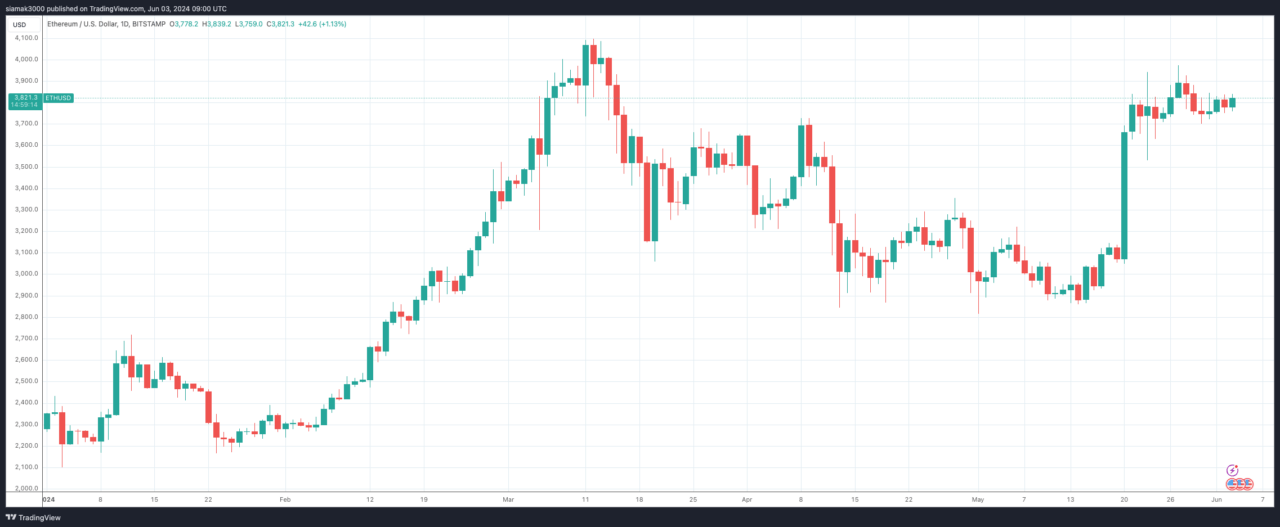The recent approval of form 19b-4 filings for several Ethereum exchange-traded funds (ETFs) by the U.S. Securities and Exchange Commission (SEC) has sent shockwaves through the cryptocurrency market, signaling a significant shift in sentiment, according to Jan van Eck, CEO of investment management firm VanEck.
VanEck is an investment management firm known for offering a diverse range of financial products and services. Founded in 1955, VanEck has built a reputation for providing innovative investment solutions, including mutual funds, exchange-traded funds (ETFs), and other investment strategies aimed at helping investors achieve their financial goals. The firm focuses on various asset classes, such as equities, fixed income, and alternative investments, and is particularly noted for its expertise in sectors like natural resources and emerging markets. VanEck’s approach combines thorough market research with a commitment to meeting the evolving needs of investors, making it a respected name in the financial industry.
As CNBC reported on June 1, in a recent interview with CNBC’s “ETF Edge,” van Eck described the SEC’s decision as “one of the most amazing things” he has witnessed in his career in terms of securities regulation. VanEck, which was the first company to apply for permission to list in the U.S. a spot Ethereum ETF, can now begin the process of bringing the product to market, although the exact timeline remains unclear.
Van Eck believes that the approval of spot Ethereum ETFs in the U.S. goes beyond just Ethereum, suggesting that it represents a broader narrative in the crypto market. He argues that there was a genuine risk of the SEC losing jurisdiction over digital assets, and the green light for spot Ethereum ETFs was a proactive move by the regulatory body to maintain its oversight.
The VanEck CEO believes there is clearer regulation on the horizon and an increased investor interest in cryptocurrencies. VanEck has publicly stated on its website that “the evidence clearly shows that ETH is a decentralized commodity, not a security,” further bolstering the case for Ethereum ETFs.
In addition to the SEC’s approval, van Eck pointed to the passing of the Financial Innovation and Technology for the 21st Century Act (FIT21) in the U.S. House of Representatives on May 8 as another significant step towards regulatory clarity for cryptocurrencies. Although he expresses doubts about the bill making it to the U.S. Senate before the upcoming election, he thinks the passage of FIT21 in the House demonstrates a growing recognition of the need for clear guidelines in the crypto space.
The market reaction to the SEC’s decision was immediate, with Ether, the native cryptocurrency of the Ethereum blockchain, experiencing a spike in value on May 23. However, the price has remained relatively flat since then, suggesting that the initial excitement may have settled as investors await further developments.

Michael Nadeau, a renowned crypto analyst known for his work at The DeFi Report, recently provided a comprehensive analysis of the cryptocurrency market, with a focus on Bitcoin (BTC) and Ethereum (ETH). Nadeau, celebrated for his deep insights into decentralized finance (DeFi) and blockchain technology, particularly emphasized Ethereum’s performance and valuation.
According to ETF experts at Bloomberg, the flow of funds into ETH ETFs is anticipated to be about 10-20% of that into BTC ETFs. This expectation stems from several factors: lower institutional interest in ETH compared to BTC, the greater complexity of understanding ETH, lower trading volumes in ETH futures, and ETH’s market cap being approximately one-third that of BTC. Given that BTC ETFs have seen around $13 billion in net flows since their inception, Nadeau estimates that ETH ETFs could attract $1.3-$2.6 billion in net inflows.
Nadeau draws a parallel between BTC’s price surge following the launch of U.S.-listed spot Bitcoin ETFs and potential movements in ETH. BTC experienced a 75% gain from $40,000 to $70,000 after its spot ETFs began trading. Nadeau expects a similar performance for ETH, potentially pushing it past its previous all-time high of $4,800.
Several factors could contribute to ETH’s outperformance. Unlike BTC miners, ETH validators do not face the same structural sell pressure, as a significant portion of ETH supply (38%) is “soft locked” on-chain, earning yield in staking contracts, DeFi applications, or as collateral. Additionally, ETH balances on exchanges are at their lowest since 2016, indicating reduced sell pressure. Nadeau envisions ETH not just as a cryptocurrency but as a pivotal technology for the growth of Web3, offering a larger addressable market than BTC.
Nadeau extends his analysis to the broader crypto market, maintaining a highly bullish outlook. He identifies several favorable cycles, including innovation in blockchain technology, macroeconomic conditions, political developments, the Bitcoin halving cycle, and ETF approvals. Regulatory concerns have diminished, particularly with reduced fears of aggressive actions from regulators like Gary Gensler.
Using a hypothetical $10 trillion market cap for crypto, Nadeau predicts BTC could reach $202,000 per coin and ETH could hit $14,984 per coin, assuming no change in supply. Even conservative estimates suggest significant price increases for both BTC and ETH, driven by continued advancements and increased market accessibility.
Featured Image via Pixabay









